Opting for rustic countertops is a popular choice among those yearning for the cozy embrace of a cabin’s ambiance. But what if we desire to infuse our own home with that same rustic allure?
There’s no necessity to overhaul your current abode into a complete rustic retreat. Instead, consider making selective changes, starting with the countertops.
Today, we embark on a comprehensive exploration of rustic countertop aesthetics, the array of materials suitable for crafting them, various wood selections, as well as the merits and drawbacks associated with these charming surfaces.
Join us for an insightful journey into the world of rustic countertops
Rustic Countertops Styles
Three distinct styles grace the realm of rustic countertops: the rugged allure of raw wood edges, the timeless charm of reclaimed wood, and the classic elegance of butcher block. Let’s delve into the intricate details of each captivating option:
1. Raw Wood Edge Rustic Countertops
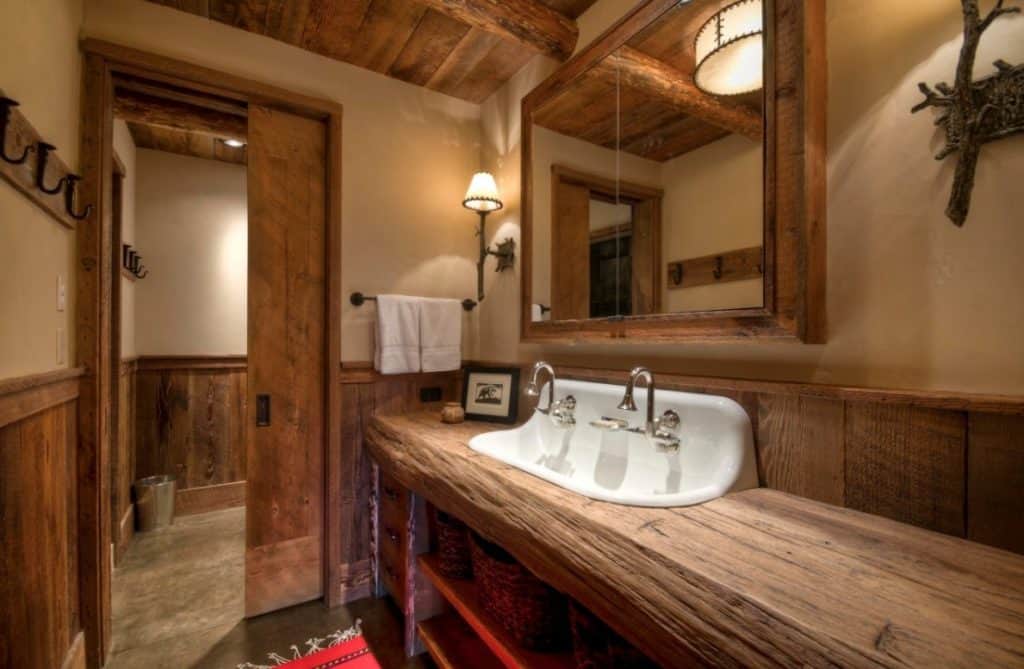
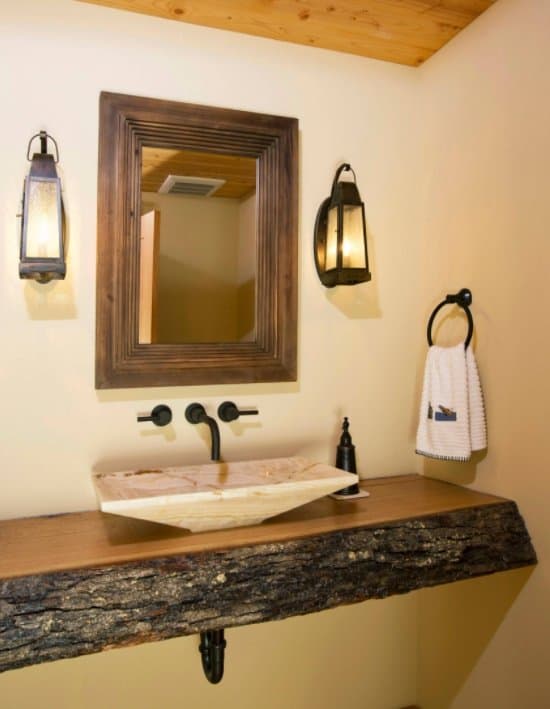
Unless you possess the woodworking prowess, coupled with the necessary tools, we would strongly advise enlisting the services of a skilled chainsaw artisan to expertly carve the raw wood edge.
2. Reclaimed Wood Rustic Countertops
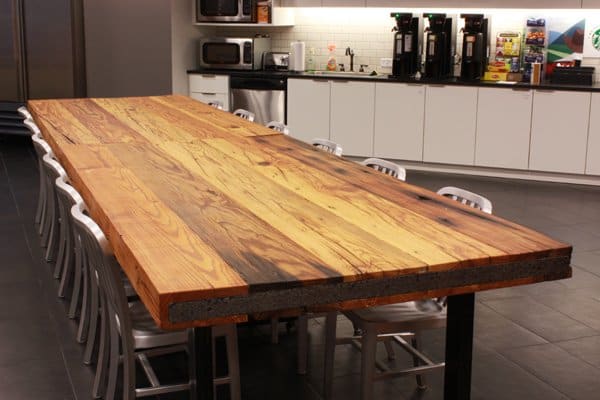
Old kitchen countertops, aged floors, retired doors, or disused tables can all undergo a transformation into a brand-new rustic countertop or table, much like the one before your eyes.
Allow us to introduce you to the marvel of pallet wood—a material that not only exudes aesthetic appeal but also stands as a testament to durability.
3. Butcher Block Rustic Countertops
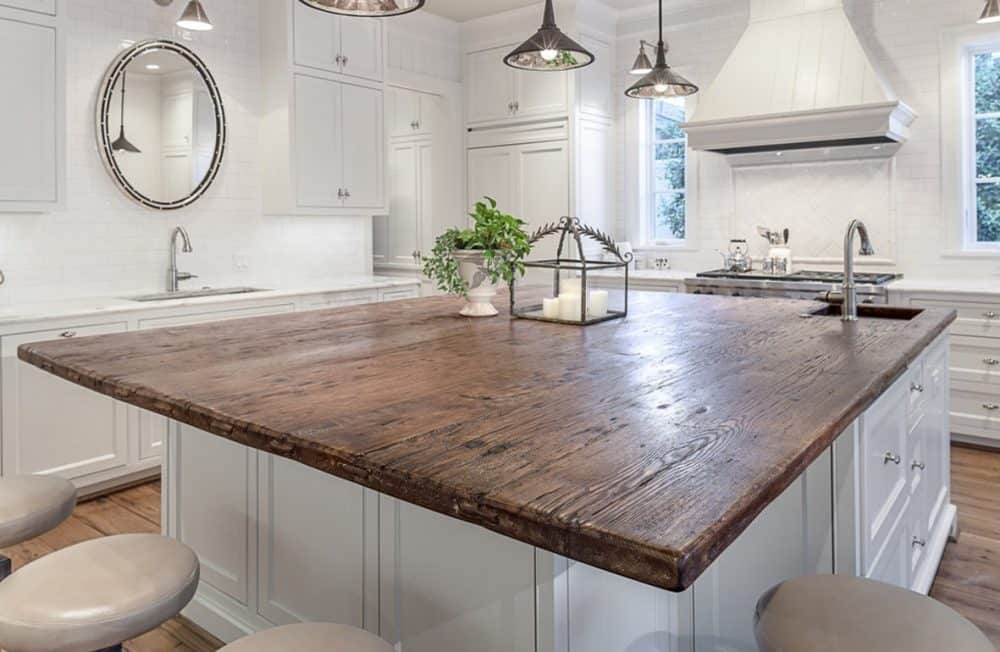
After all, who wants to lag behind the latest trends?
Presently, butcher block rustic countertops for kitchen islands are experiencing a surge in popularity. Let’s be candid and acknowledge the undeniable truth—this aesthetic is truly captivating!
12 Types of Woods for Countertops
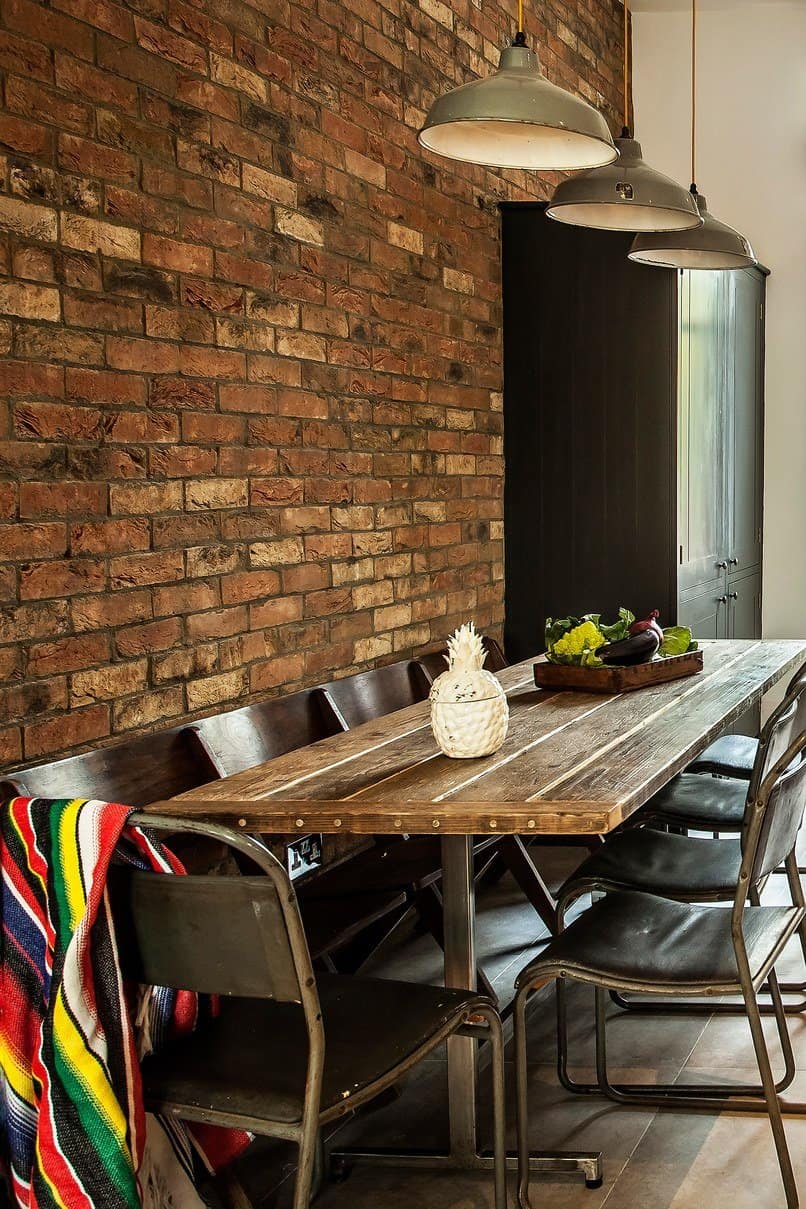
Apart from bamboo and maple, mesquite, black walnut, and cherry also bask in the limelight when it comes to rustic countertops.
In summary, the wood types falling under the softwood category are often regarded as the benchmark for rustic countertops, aligning with the standards set by FSC and LEED.
1. Cherry Wood
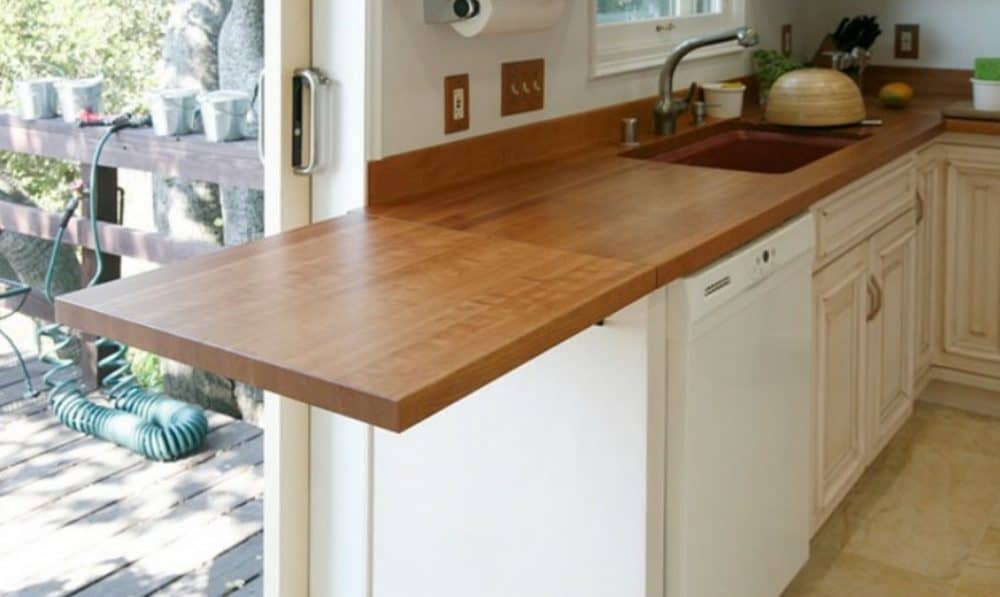
2. Zebrawood
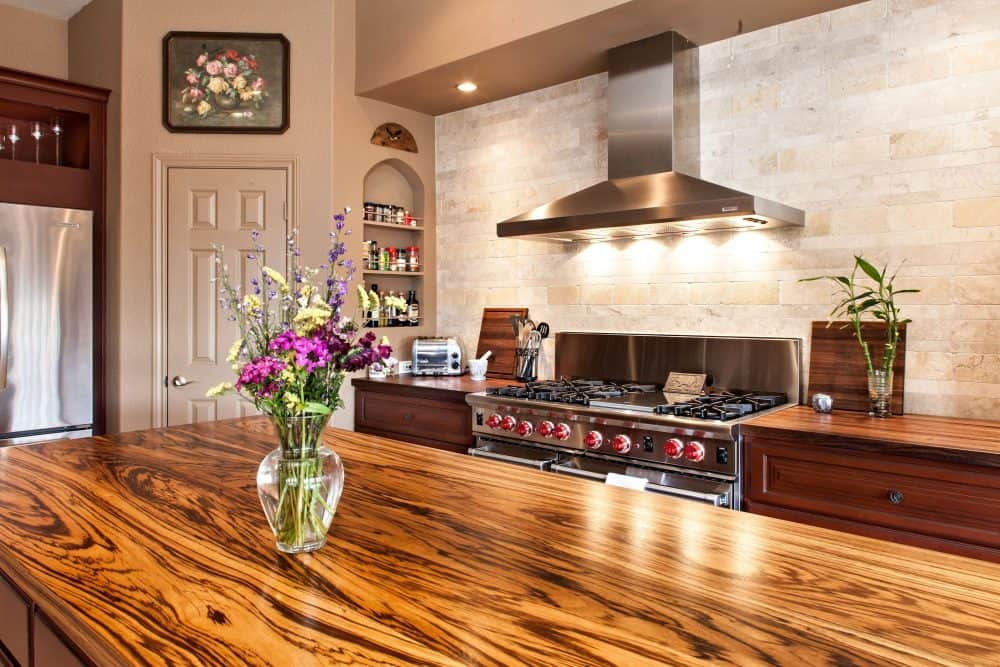
Prepare for your kitchen to elicit awe from anyone who steps foot inside, as the beauty of this pattern is truly breathtaking!
3. Bamboo
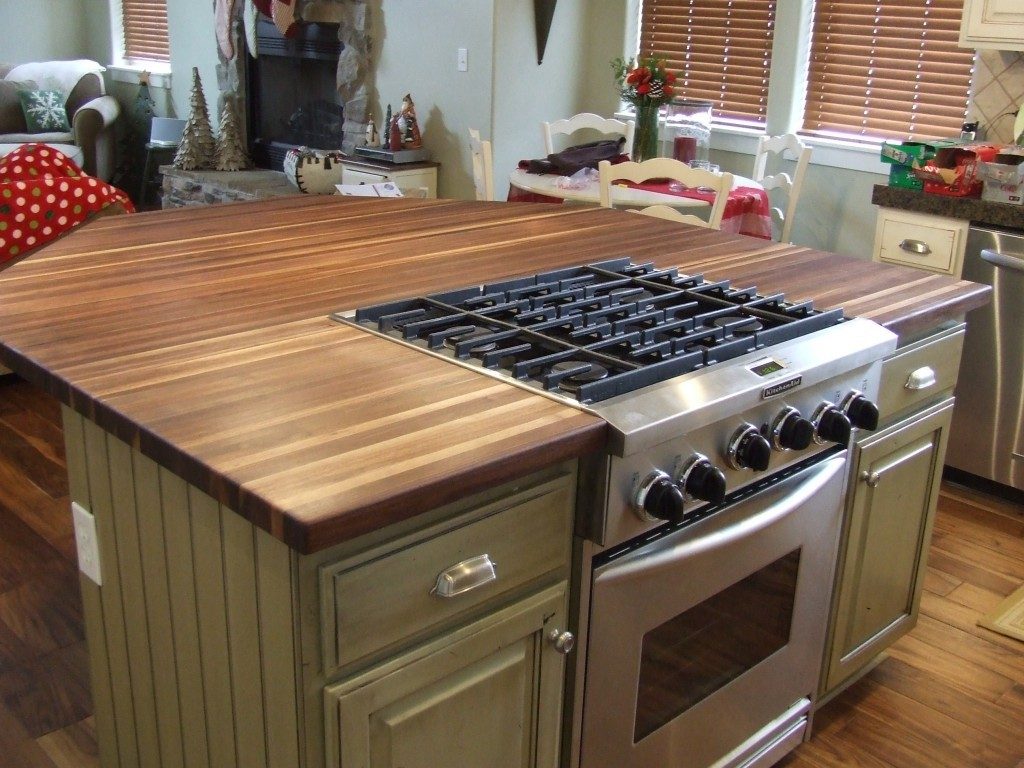
4. Wormy Chestnut Wood
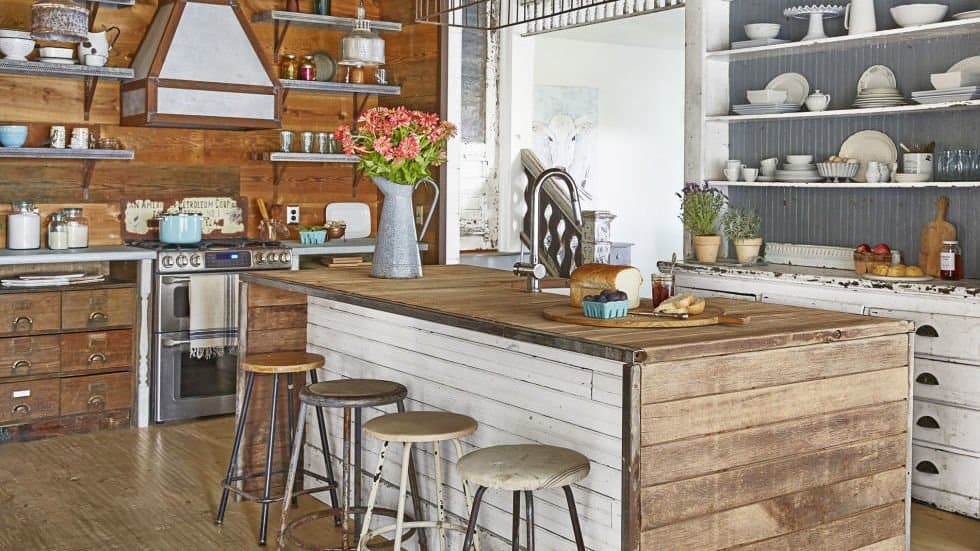
5. Maple Wood
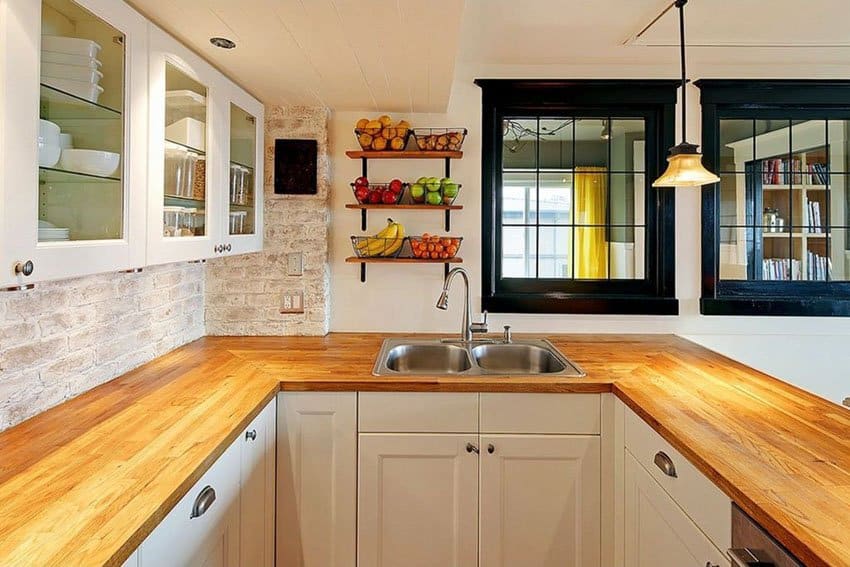
Maple wood garners acclaim for its stunning, luminous hue, making it an ideal selection to infuse your kitchen with a bright and cheerful atmosphere.
Furthermore, maple wood boasts two additional attributes that set it apart from its counterparts: remarkable resilience and impressive resistance to wear and tear.
When you opt to fashion a butcher block countertop from maple wood, the result is nothing short of breathtaking, radiating an extraordinary beauty!
6. Hickory Wood
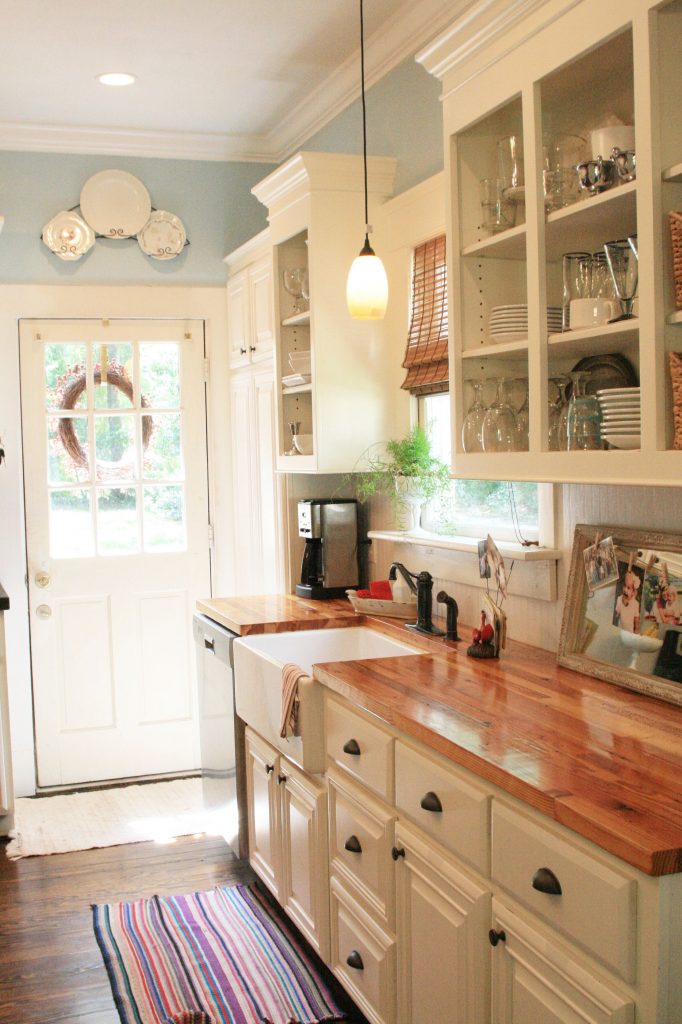
Throughout history, hickory wood has upheld its reputation as the most enduring timber found across the expanse of America.
This wood’s resilience can be attributed to its remarkable longevity of over 50 million years on American soil, a testament to the undeniable scientific reality.
Moreover, hickory wood boasts a captivating color palette, rendering it an impeccable choice for crafting rustic countertops of exceptional allure.
7. Mahogany Wood
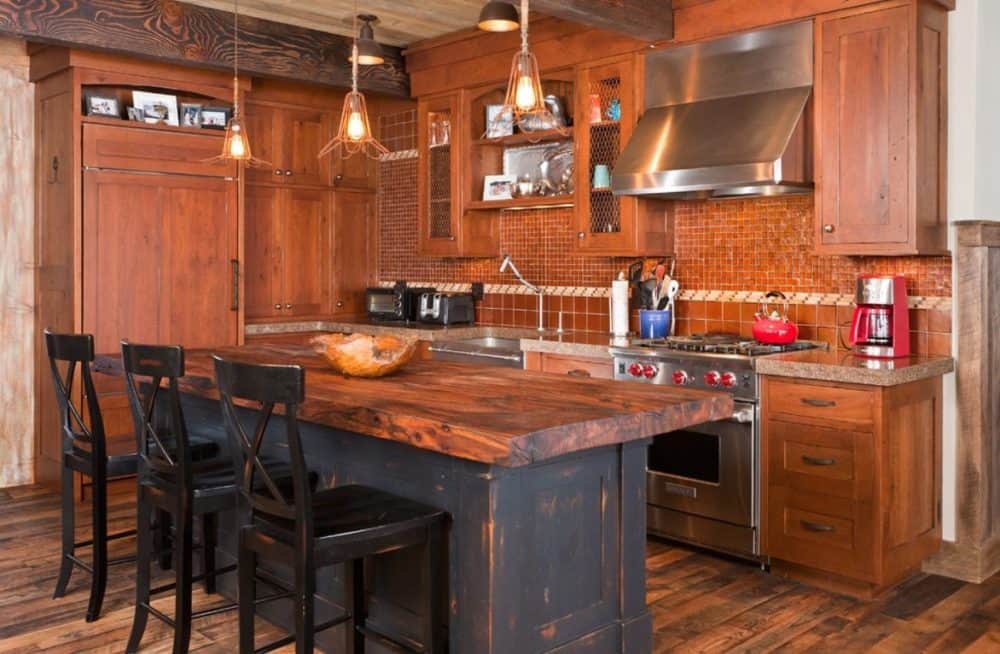
In the vast array of wood options, mahogany occupies a distinctive and exclusive position. It’s frequently chosen by those seeking to infuse their kitchens with the cozy ambiance reminiscent of a cabin retreat.
As you may have deduced, mahogany wood is recognized for its premium price tag, primarily due to its classification as a softwood and its alluring brown-red hue that captivates the eye of any beholder.
8. Teak Wood
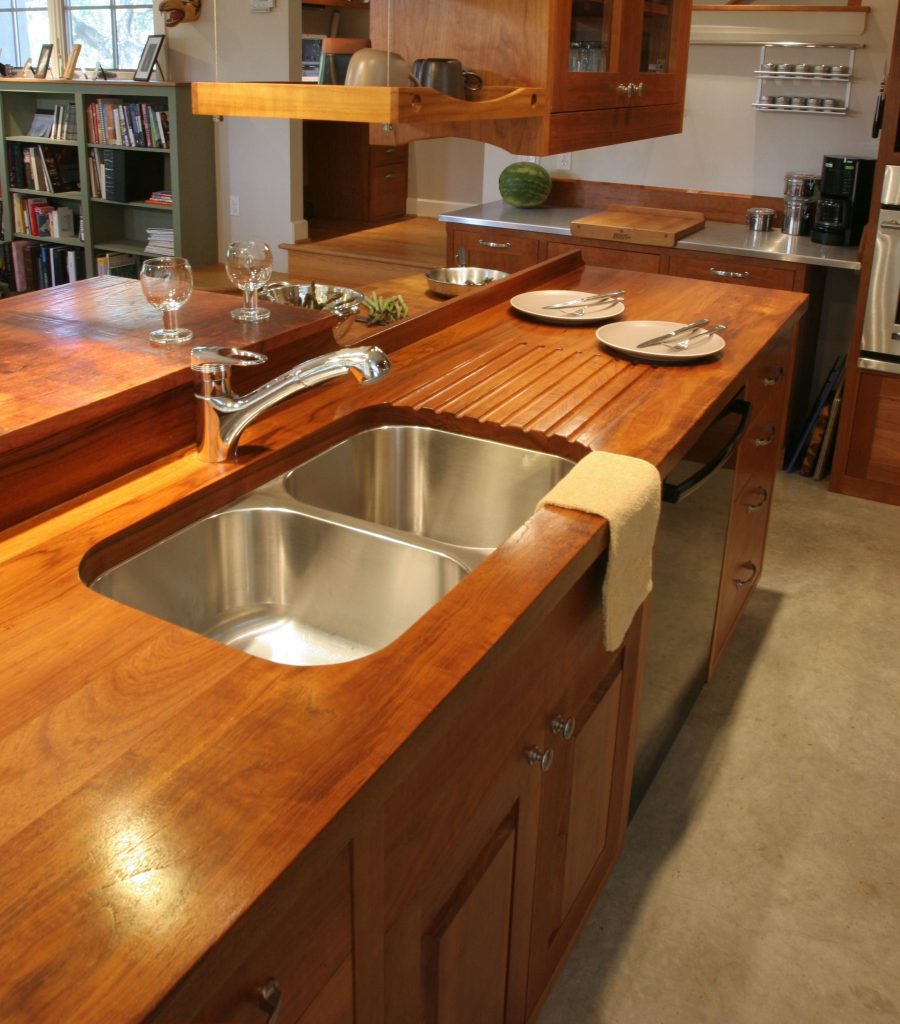
Teak wood traces its origins back to the Pacific coast of Mexico, where it boasts two distinct characteristics that captivate admirers: a striking aesthetic presence and exceptional durability.
Its bold allure emanates from the warm, signature hue it possesses, while its resilience is rooted in its remarkable resistance to moisture. This attribute provides a sense of security for those prone to the occasional mishap of spilled drinks.
9. Black Walnut Wood
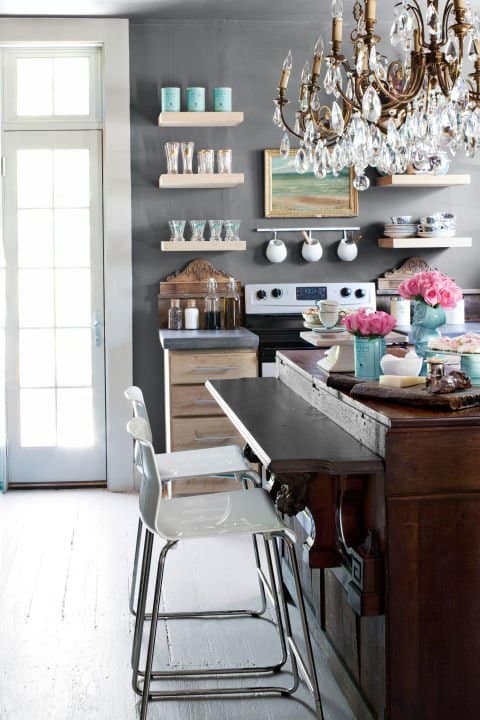
Black walnut wood can be categorized into two distinct types: sapwood and heartwood.
These two varieties exhibit contrasting colors; the sapwood possesses a more honey cream hue, while the heartwood boasts a deep brown shade, verging on the cusp of black and even flirting with a hint of purple.
Beyond its famed coloration, black walnut wood has earned renown for its unwavering durability and the mesmerizing allure of its grain pattern—a truly captivating feature.
10. Wenge Wood
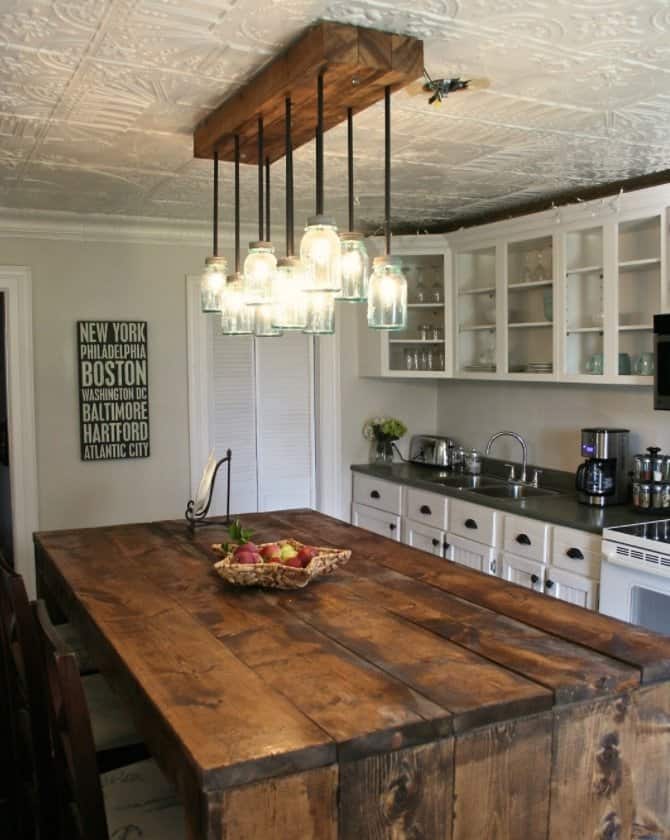
Hailing from the African continent, wenge wood has garnered popularity both in its place of origin and beyond. One cannot help but be captivated by a defining feature of this wood: its striking coloration.
Characterized by its deep brown hue adorned with prominent black veins and stains, wenge wood proves to be an ideal choice for crafting rustic countertops. Its enduring durability and historical usage in furniture construction make it a timeless selection for such applications.
11. Beechwood
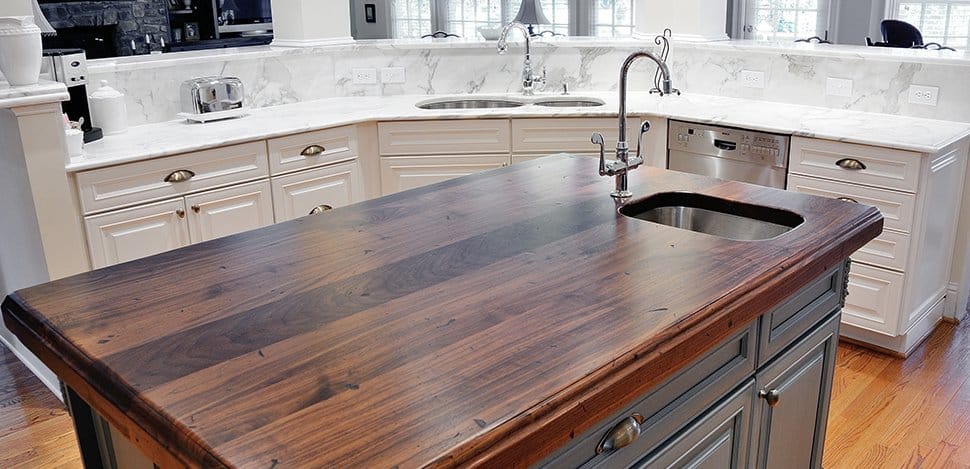
In bygone days, beechwood didn’t take center stage, largely because the antiquated chainsaws of that era lacked the muscle to tame it.
However, in the modern age of technological progress, beechwood has risen in stature to become a favored choice for rustic countertops.
Though it carries substantial weight, this heft is a testament to its robust and enduring nature. Notably, it marries this strength with an appealing aesthetic, all while remaining remarkably budget-friendly. Consider adorning your kitchen with a rustic countertop in that captivating orange-pink hue – an excellent choice indeed!
12. Tiger Wood
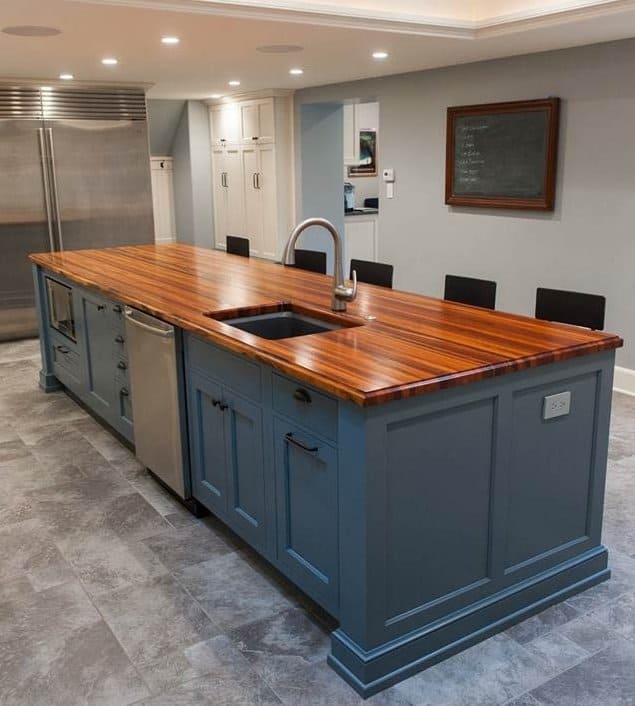
For those in search of a wood even harder than beech, tigerwood emerges as the ultimate solution. Among the dozen options on our list, tigerwood stands out as the most formidable and resilient.
What further sets it apart are its bold, pronounced stripes. Thus, tigerwood not only excels in terms of durability but also makes a resounding statement in the realm of style and aesthetics.
Must-Have Characteristics of Excellent Countertop
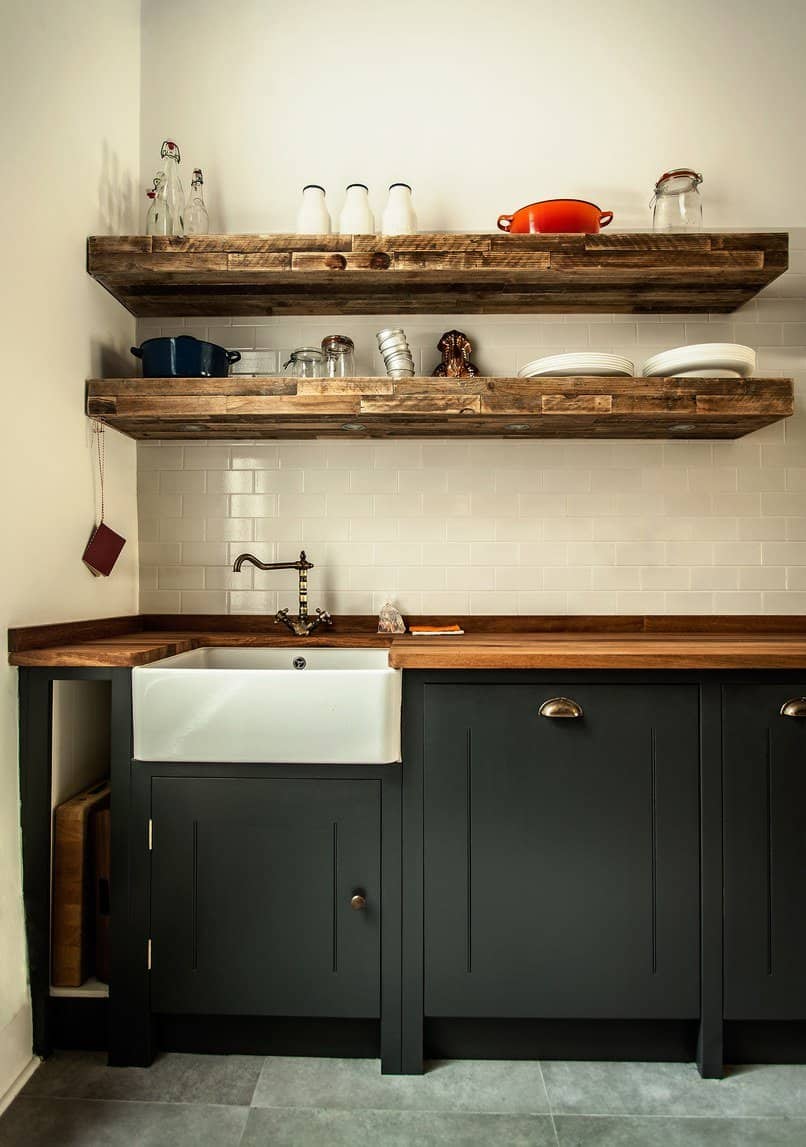
Bear in mind that an excellent countertop, constructed from the ideal wood, exudes a comforting warmth to the touch.
Furthermore, wood is highly amenable to modification. The process of cutting and installing wood countertops is notably swift, especially when contrasted with the laborious endeavors involved in working with stone or other solid surfaces.
In the realm of rustic design, wood reigns supreme—there’s simply no substitute. Period.
Pros and Cons of Rustic Wood Countertops
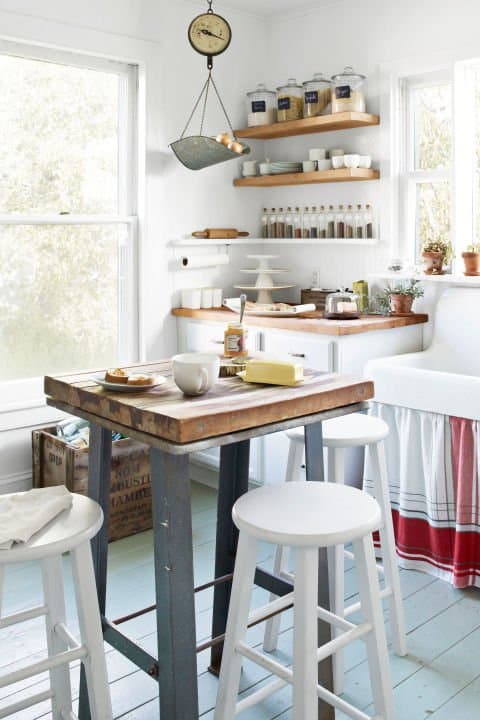
Utilizing wood as your choice material for countertops offers a slew of advantages, including:
- Tranquility: Experience serene meals without the annoyance of clinking noises during dining or food preparation.
- Safety: Thanks to its softer surface, wood countertops prove to be a safer haven for your cookware and glassware.
- Resilience: Wood boasts impressive resistance to both heat and citrus, ensuring durability in your culinary space.
- Anti-bacterial Shield: When properly sealed, a wooden countertop morphs into a natural antibacterial shield, enhancing your kitchen’s hygiene.
- Unique Elegance: The natural beauty of wood reveals itself through its intricate and one-of-a-kind patterns.
- Comfort: Wood stands out as a supremely comfortable material, surpassing alternatives in terms of tactile pleasure.
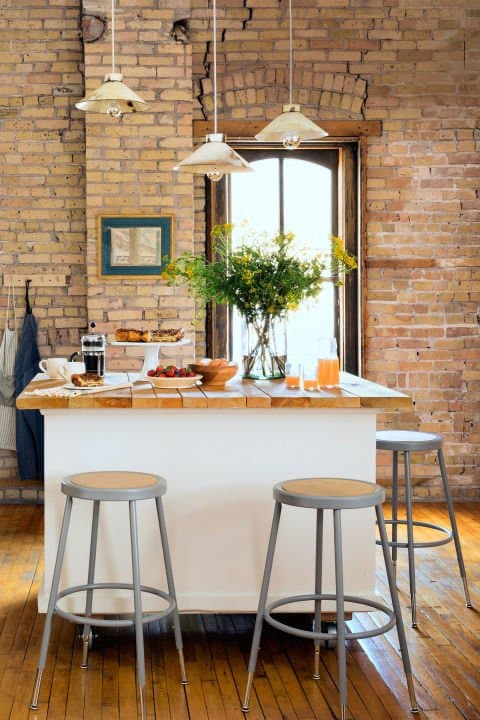
Nonetheless, it’s essential to acknowledge the downsides, or cons, of opting for a wood countertop. These include:
- Maintenance: Wood countertops demand a high level of upkeep, necessitating regular oiling at intervals of 2 to 3 times annually or even more, depending on usage.
- Vulnerability to Fungus: As a “live surface,” wood may be susceptible to fungal growth if not diligently maintained. It’s crucial to shield it from prolonged exposure to water and moisture to prevent such issues.